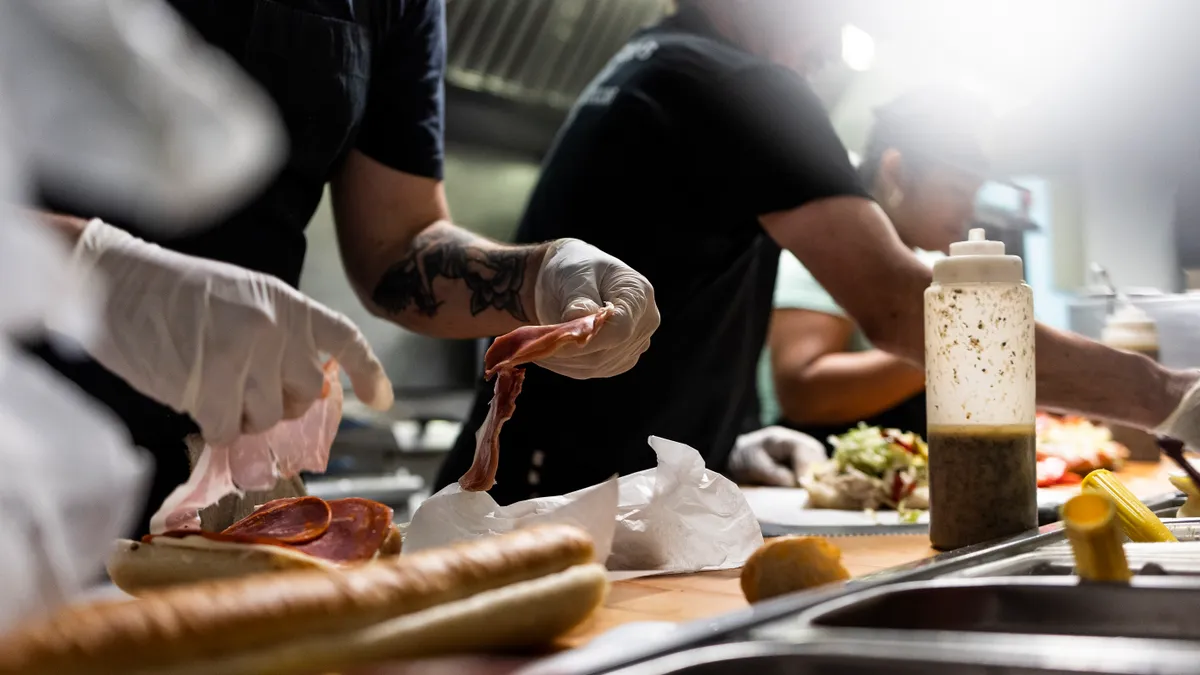Dive Brief:
- Optimism among owners of small businesses rose last month to the highest level since 2022 even as uncertainty in their outlook hit a 51-year high, the National Federation of Independent Business said Tuesday.
- The number of business owners expecting increased sales volumes rose to the highest level this year, NFIB said, describing results of a monthly survey. With the Nov. 5 election concluded, uncertainty among small businesses will fade, NFIB Chief Economist Bill Dunkelberg predicted in a statement.
- At the same time, “small business owners are still facing unprecedented economic adversity,” Dunkelberg said, noting persistent inflation, unfilled job openings and low current sales levels.
Dive Insight:
Nine out of the 10 factors that determine the optimism index increased, including the outlook for business conditions, the NFIB said.
Brightening prospects for Republican candidates last month likely kindled optimism, Oliver Allen, senior U.S. economist at Pantheon Macroeconomics, said Tuesday in a note to clients.
“Small business owners lean Republican and online betting markets pointed to a marked improvement in the Republicans’ perceived chances in the November elections between September and October,” Allen said.
Four components fueled roughly 70% of the rise in the optimism index: sales, earnings, good time to expand and expectations for the economy, Allen said.
“Those components often surge when political news favors the GOP, for example, after Donald Trump’s win in 2016,” he said, predicting “a much bigger surge” in the index in November.
President-elect Trump will inherit an economy that has defied forecasts for a recession this year and grown well above its 2% trend rate.
Inflation has slowed toward the Federal Reserve’s 2% target and, despite the highest interest rates in two decades, unemployment is at a comparatively low 4.1%.
“You have to acknowledge that — as of today — the economy looks pretty good,” Richmond Fed President Tom Barkin said in a speech Tuesday.
The central bank, noting easing price pressures, trimmed the main interest rate by 0.25 percentage point on Thursday and by 0.50 percentage point in mid-September.
“As rates come down and the election moves into the rearview mirror, we see employers start to feel more comfortable investing in the future,” Barkin said, describing a sunny scenario for the coming months.
“After having their recession playbooks open for two years, they finally place them back on the shelf,” he said. “They trust the solid demand they keep seeing and they hire to ensure they can meet it. Real wages stay healthy. Workers stay employed and continue to spend.”
In a pessimistic scenario, businesses lack pricing power and “decide they need to cut costs more to maintain margins,” Barkin said. “They turn to layoffs. Workers who lose their jobs, as well as those who fear for their jobs, pull back. Spending suffers.”
The possibility of severe shocks keeps policymakers on their toes, he said. “In particular, we remain attuned to the potential for financial market turmoil, supply side positive and negative shocks, geopolitical discontinuities and the like.”
High federal spending also poses a risk to the economy, the NFIB said, noting $2 trillion in government borrowing at comparatively high interest rates.
“Government spending rose almost twice as fast as consumer spending and government employment has dominated the employment statistics,” the NFIB said. “The economy cannot continue to finance its growth by borrowing more money.”















